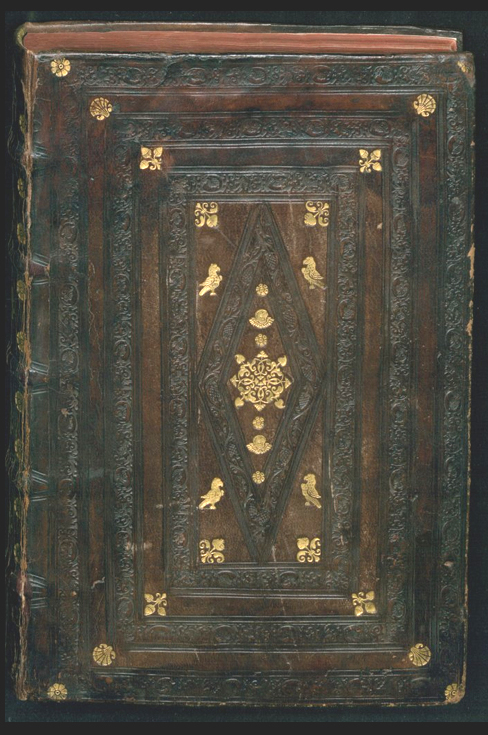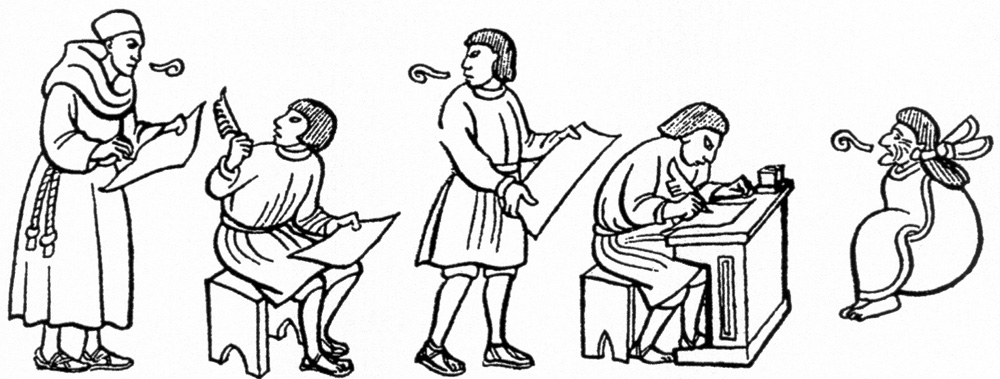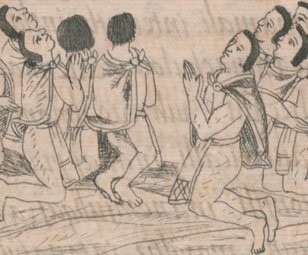Florentine Codex
 << Florentine Codex, Book Vol. 1
<< Florentine Codex, Book Vol. 1
Historia General de las cosas de Nueva España
"General History of the Things of New Spain",
also called the Florentine Codex. Compiled by Friar Bernardino de Sahagún and a group of Nahuatl, [mesoamerica native Indians including Aztec Indians], scholars between 1575 and 1577.
Compiled by Friar Bernardino de Sahagún and a group of Nahuatl, [mesoamerica native Indians including Aztec Indians], scholars between 1575 and 1577.
Historia general de las cosas de nueva España (General history of the things of New Spain) is an encyclopedic work about the people and culture of central Mexico compiled by Fray Bernardino de Sahagún (1499–1590), a Franciscan missionary who arrived in Mexico in 1529, eight years after completion of the Spanish conquest by Hernan Cortés. Commonly referred to as the Florentine Codex, the manuscript consists of 12 books devoted to different topics. Book VI is concerned with rhetoric and moral philosophy. It contains texts that Sahagún collected around 1547. He wrote in the prologue to Book I of his work, the Mexicans “are held to be barbarians and of very little worth; in truth, however, in matters of culture and refinement, they are a step ahead of other nations that presume to be quite politic.”  << Bernardino de Sahagún had recorded the testimonies of the indigenous old native Mesoamerica Indians.
<< Bernardino de Sahagún had recorded the testimonies of the indigenous old native Mesoamerica Indians.
Sahagún gained the assistance of two important indigenous groups: the elders of a number of towns in central Mexico (principales) and Nahua students and former students at the College of Santa Cruz in Tlatelolco, where Sahagún worked for much of his time in Mexico. The principales answered questionnaires prepared by Sahagún about their culture and religion, and their responses were recorded in their own pictorial form of writing. The Nahua students interpreted the images and expanded the answers, phonetically transcribing Nahuatl using Latin letters. Sahagún then reviewed the Nahuatl text and added his own Spanish translation. The whole process took almost 30 years and finally was completed in 1575–77. The illustrations combine the syntactic and symbolic traits of the ancient Nahua tradition of painting-writing with the formal qualities of European Renaissance painting. (World Digital Libary)
The Florentine Codex. It consists of 2400 pages organized into twelve books with approximately 2,000 illustrations drawn by native artists using European techniques.The text in Spanish and Nahuatl, documents the culture, religious,ritual practices, society, economics, and history of the Aztec people.’ (Widipedia, Bernardino de Sahag ̇n)
"The first English translation was issued in 13 volumes between 1950 and 1982, and the first facsimile was published in 1979." (Archive Natural History, www.ncbi.nim.nih.gov/pubmed/19845064)
----------------------
<<Florentine Codex, Book Vol. VI, Aztecs Praying.
----------------------
Florentine Codex Book Vol. I (World Digital Library)
Florentine Codex Tranlsated into English, Book Vol. I (Hathi Trust Digital Library)
